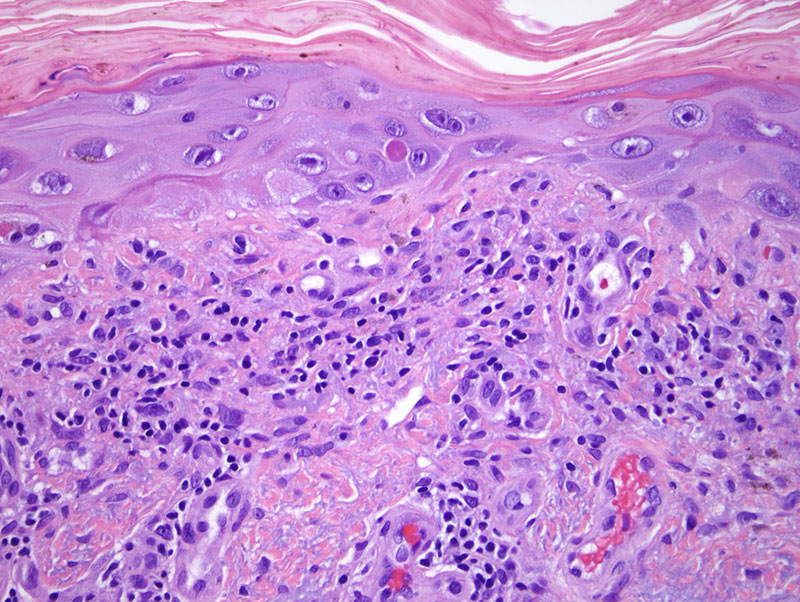Undoubtedly this skin rash is attributed to chemotherapy use. The dominant morphology is that of a severe irritant chemotherapy effect with significant architectural disarray and dysmaturation of the epidermis with a number of bizarre keratinocytes present within the epidermis typical for chemotherapy effect. However, there is also a supervening lichenoid immunogenic component indicating that the drug is also causing an allergic response whereby the drug must be functioning as a hapten and evoking a lichenoid hypersensitivity reaction.
There is literature precedent regarding photosensitive lichenoid drug reactions due to Capecitabine. In fact, in 2014 a report was published on a patient who received Capecitabine for treatment of metastatic breast carcinoma. The patient developed a pruritic eruption on sun-exposed areas. A skin biopsy showed a lichenoid interface dermatitis with compact orthohyperkeratosis. The patient was prescribed topical Clobetasol and systemic hydroxyzine along with adherence to sun protection strategies. The eruption cleared and/or at least significantly improved without the patient really going off the Capecitabine. This oral form of 5-fluorocil has been linked with oral lichenoid stomatitis and subacute cutaneous lupus erythematosus. There are less than half a dozen reports regarding lichenoid reactions related to this particular drug(please see references below).
REFERENCES:
Hague JS, Ilchyshyn A. Lichenoid photosensitive eruption due to capecitabine chemotherapy for metastatic breast cancer. Clin Exp Dermatol. 2007 Jan;32(1):102-3.
Walker G, Lane N, Parekh P. Photosensitive lichenoid drug eruption to capecitabine. J Am Acad Dermatol. 2014 Aug;71(2):e52-3.






